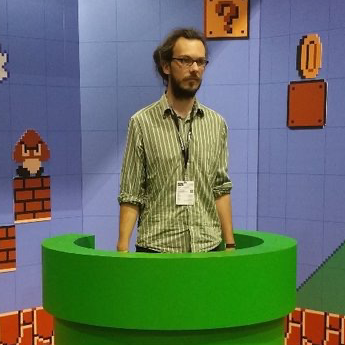i really miss the feel of early-mid-90s coffee shops. cozy, comfy, neighborhood coffeshops. like your local bar, but for the morning/afternoons. local coffee, local foodstuffs, and locals. it was a hangout spot and often had open internet workstations for that sort of stuff (obviously long before wifi and juuuust about when broadband was becoming commercially available). these were chill spaces for work, hanging out, meeting up, or just grabbing a quick cup of coffee and a biscotti.
fuck you Starsucks for killing these wonderful places.
deleted
anodyne clones of uncomfortable spaces designed to pump out profits and burnt, sugar-bombed coffee drinks?
It’s all in the 3 ring binder.
You confused me for a sec, I’ve enjoyed Anodyne Coffee Roasting lots and thought their space is plenty comfortable lol
But even Starbucks has fallen far from its roots. Does nobody remember the ‘90s Starbucks that were actually comfortable places with good wifi, good living room seating like couches and low tables? Some had small libraries of free books and newspapers? The coffee was actually pretty good! The pastries were pretty darn good too, with a wide variety.
Now it’s all institutional, cheap metal hard seats. The spaces are smaller and far less welcoming. The pastries come out of a plastic bag. They want you to buy your shit and leave.
For the record - I travel a LOT. If you want to go to a coffee shop and look for instagram shops, that’s what you’ll find. Any decent city has its own independent shops with a variety of styles and better coffee than any chain.
I’ve been to several coffee shops through the years that also had local artists that helped with the decor, and local musicians playing a couple days a week.
For whatever reason I’ve never really looked at a coffee shop as a bar/pub for daytime folks but I guess that’s what a lot of them kind of were.
I remember this time. It seems wild to me that I used to simply walk down to the coffee shop, just to hang out after work or on the weekend. I remember whiling away hours and hours, often closing out the shop and having to move to another coffee shop to continue a conversation. I didn’t even have a smartphone lol it was amazing
And I’m a mad introvert, I don’t know what it was about that time and place… would be nice if young people could have that again
It’s not just coffee shops. It’s hotel rooms and restaurants and homes. Hell, even our cars only come in two shapes now: Egg and Box. And three colors: White, gray, or black
It’s called fashion. Give it a decade, something else will become fashion.
I thought it was called a fad.
That’s just fashion you don’t like 😄
Haha capatalism no food
Isn’t that two more colours than Henry Ford gave you! Sheesh! Ungrateful much!
One of the most obvious signs of the arrival of Idiocracy times was the 21st Century truck designs that all have a square, flat front end like a massive brick wall. As if no engineer who worked on the design of those has ever heard of wind resistance and fuel efficiency.
This is part of the reason I love driving a (BMW) Mini. It’s not the best car in the world, but it looks different to all the other cars. And drives like a go kart.
I will offer an alternate explanation:
Restaurants (and by extension, coffee shop) are inherently very risky businesses to start and operation, I think over 90 percent of them fail in the first year. So, to increase the chances of survival, you have to make sure your business is ran as efficiently as possible, things like rent and location is outside of your control, so you always want to maximize the value of every dollar you spend.
The first people notice when they go into a new restaurant is cleanliness, nobody wants to eat at a new place that looks dirty, you can only get away from that if you are a decades old local hole in the wall. Ease of cleaning, therefore, is the number 1 priority over everything else.
So, why the “industrial” concrete/tiled floor and metal chair? Because you can just hose them down at the end of the day. Same thing with big open wooden tables and sparce renovations, ease of cleaning.
The second thing is you have to avoid major renovations, make the with the space you have and maximize the amount of interesting decorations for the minimum money/work.
Why put subway tiles on white walls for decorations? Because you don’t have to hire painters, and subway tiles are cheap and interesting looking.
Why use big open windows and only dim Edison bulbs for lighting? Because hiring electricians to rewire the place you rent for lighting is a lot more expensive than using the big windows you already have.
Why avocado toast? Because coffee is your main focus, the food is important but secondary, and a piece of fruit on a piece of bread pretty much doesn’t require any cooking.
It’s really the operation efficiency, rather than some trend following “Instagram” asthetics that led to all these coffee shop looking the same, I think this is a better explanation than what this article proposes.
I’ve begun a new job at a ✨cool✨ (legitimately) local coffee shop. Not my first career choice, but I’ve moved countries and I value people over money. Anyway, that’s a different story.
Why avocado toast? Because coffee is your main focus
Ex-fuckin’-actly. We prepare high-quality coffee and for a small team sourcing from farmers halfway across the world ensuring that it stays high-quality is the main focus. There are 3 bakeries within a short walking distance if you want food.
Besides that, it’s the familiarity that drives coffee shops to look like coffee shops. You wouldn’t expect a black metal album cover to look like a jazz record album for the most part unless you’re deliberately playing a trick.
That said I do enjoy it when people twist formulas, but obviously, it’s a risk for business. In my case, the cafe that I work in could be found all over Europe, but locally it remains a twist on what the locals usually do. And I think that’s where the feeling of uniqueness comes from.
The article points out a valid critique that I’ve mulled over in my own head:
Only certain types of people were encouraged to feel comfortable in the zone of AirSpace, and others were actively filtered out. It required money and a certain fluency for someone to be comfortable with the characteristic act of plunking down a laptop on one of the generic cafes’ broad tables and sitting there for hours, akin to learning the unspoken etiquette of a cocktail bar in a luxury hotel. The AirSpace cafes “are oppressive, in the sense that they are exclusive and expensive”, Gonzalez said. When whiteness and wealth are posed as the norm, a kind of force field of aesthetics and ideology keeps out anyone who does not fit the template.
And goes to interesting places recounting the history of instagrammability, the tyranny of the algorithm and the experiences of the owners of the coffeeshops. Overall a good read.
It is happening in my industry as well. A lot of our part suppliers are converging. Our systems look and act like our competition. It is a losing battle, I try to keep pushing but the problem is bigger than I am. Eventually all the value adds all the uniqueness gets removed and it becomes a race to the bottom. Who can make the same that hit the platonic form and do it for the least amount of money.
How bleak. A couple proprietary algorithms driving millions of business decisions across the globe, everyday.
Before algorithms, it was just whoever was considered the best consultant. I don’t really see much difference here between using humans to look at data and figure out what things may have an effect at bringing in customers or otherwise increasing profits and a machine doing the same thing other than the machine doing it faster and better.
That’s just on the whole “everything is the same” front, though. It is bleak for the humans that are going to be replaced by the machine.
What’s different is the feedback loop and the globalization. Yes, it’s just capitalism, ie giving the people what they “want”, but it’s really not just the same as someone suggesting that customers like clean lines and plants.
The feedback loop is the most disturbing part, IMO. You have an algorithm deciding what gets popular, which means creatives hoping to be financially sustainable have to cater to it to some degree, which reinforces the algorithm and removes a little bit of uniqueness from society.
Creative people have always had to consider"what sells" to some degree if they want to make money from their effort, but we’ve gone beyond artists making “art with some degrees of marketability” into making products called “art” with little of the emotional/intellectual "challenge’ that comes with unique works.
Seems relevant … Ted Gioia’s article on “Signs you’re living in a world without a counter culture”: https://www.honest-broker.com/p/14-warning-signs-that-you-are-living
In general, it’s a very older-gen (boomer/x-gen) point to make at the moment, but it’s probably one of the nostalgic points worth taking seriously. I’m sure today there are certainly counter cultures. My bet is that compared to the past, they’re harder to find, generally more numerous and probably more nebulous and hard to pin down unless you’re “in them”, and, problematically, I’d imagine they tend to be “thinner” and more fragile … less “alternative world views” and more “particular vibe specific to a time and place”. Genuinely curious topic for me though.
My first reaction was that this excerpt reminds me of a piece I wrote two years ago called “The Airbnb-ification of the arts”, about how artists looking to make a career out of art are forced to cater to an algorithm that favors comfortable predictability over depth or uniqueness. My essay was heavily inspired by Kyle Chayka’s famous 2016 essay “Welcome to Airspace”.
Jokes on me for not reading the byline because it turns out Kyle wrote the book this excerpt is from! lol good for him. Looking forward to reading it.
I’m curious to know if he has a presence on Mastodon or any other Social Web apps, he’s a really great writer I’d like to follow.
This is the best summary I could come up with:
Inevitably, I could quickly identify a cafe among the search results that had the requisite qualities: plentiful daylight through large storefront windows; industrial-size wood tables for accessible seating; a bright interior with walls painted white or covered in subway tiles; and wifi available for writing or procrastinating.
Accoutrements such as lights made from rusty plumbing fixtures were left behind in favour of houseplants (succulents especially) and highly textured fibre art, evoking west coast bohemia more than hardscrabble New York City.
You can ease into that space because it’s such a familiar space.” The homogeneity contrasted with the overall hipster philosophy of the 2010s, namely, that by consuming certain products and cultural artefacts you could proclaim your own uniqueness apart from the mainstream crowd – in this case a particular coffee shop rather than an obscure band or clothing brand.
It required money and a certain fluency for someone to be comfortable with the characteristic act of plunking down a laptop on one of the generic cafes’ broad tables and sitting there for hours, akin to learning the unspoken etiquette of a cocktail bar in a luxury hotel.
“Everything else is damage control.” We talk about politics, culture and travel becoming globalised, but on a more fundamental level, Spivak is correct that what really flows across the planet are various forms of money and information: investments, corporations, infrastructure, server farms and the combined data of all the digital platforms, sluicing invisibly like wind or ocean currents between nations.
Pursuing Instagrammability is a trap: the fast growth that comes with adopting a recognisable template, whether for a physical space or purely digital content, gives way to the daily grind of keeping up posts and figuring out the latest twists of the algorithm – which hashtags, memes or formats need to be followed.
The original article contains 4,235 words, the summary contains 300 words. Saved 93%. I’m a bot and I’m open source!














